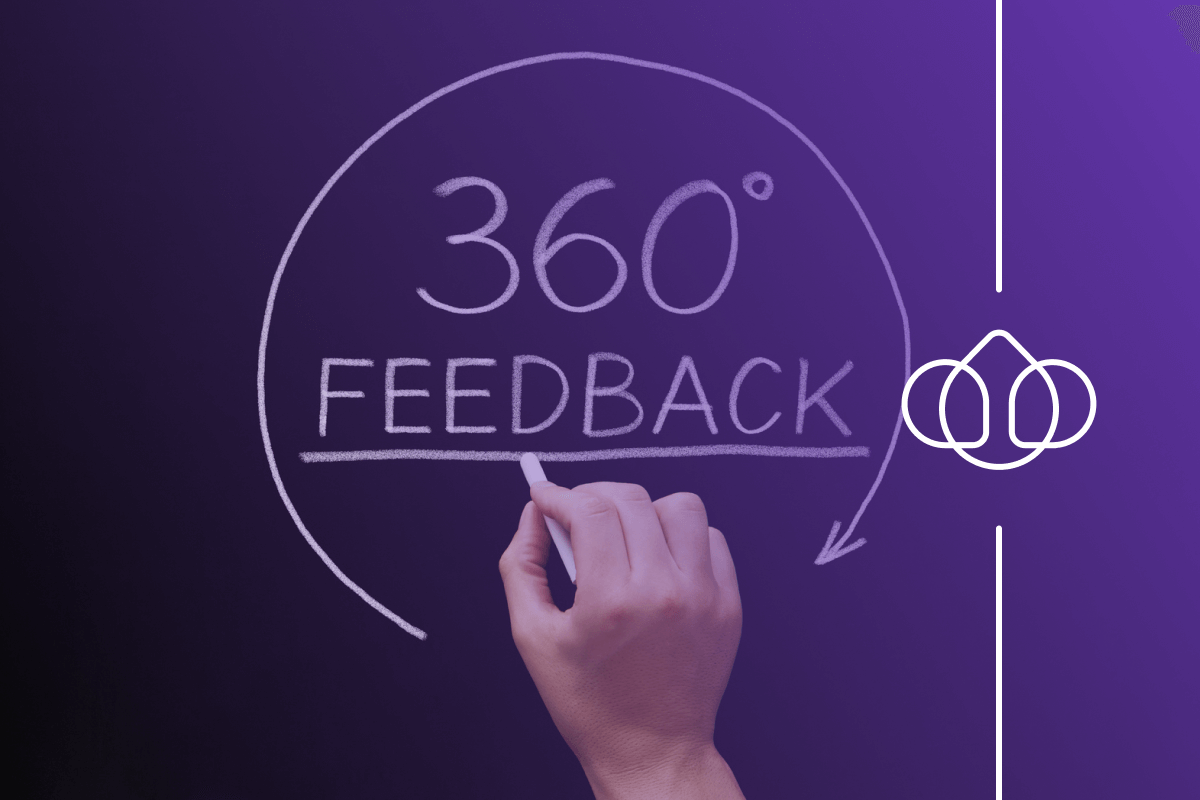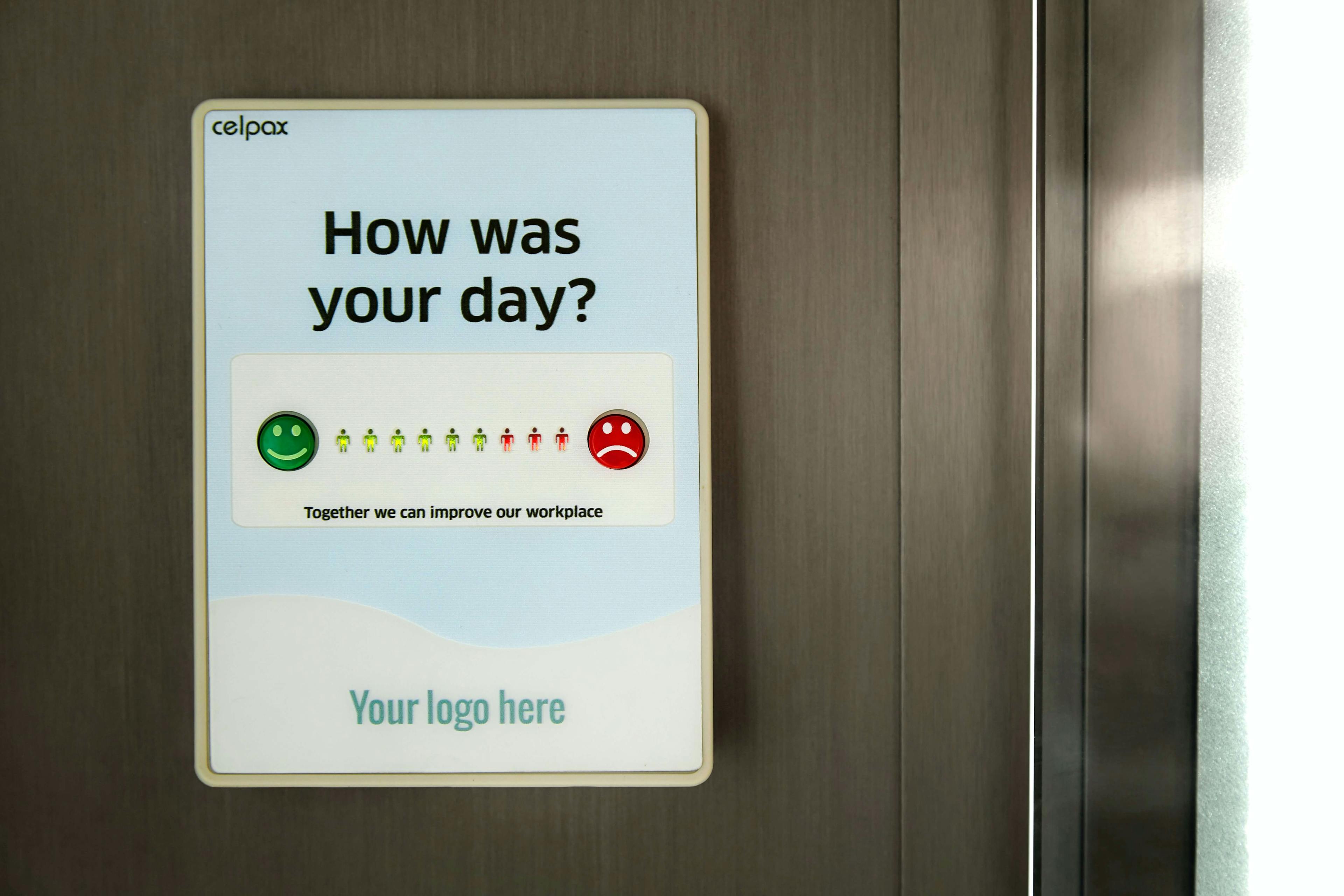With employee engagement an important issue right now, particularly for companies wanting to increase their employee retention in uncertain times, managers are looking for creative and effective ways to improve their employee feedback.
One of the most popular methods to do this is using 360-degree feedback, a multi-rater process that’s designed to give a more rounded, complete view of an employee’s performance from multiple perspectives.
When it’s done right, 360-degree feedback is an excellent and inclusive way to provide rich insights while building a collaborative environment. However, it does have its risks and limitations which are important to understand before introducing it into your employee feedback strategy.
In this article, we’re going to look at 360-degree feedback advantages and disadvantages, discuss some best practices when implementing it, and present a 360-degree feedback sample questionnaire. But first, let’s dig deeper into what 360-degree feedback actually is.
What is 360-degree Feedback?
360-degree feedback is a method that allows an employee to receive performance feedback from not only their managers but eight to twelve of their peers too. This helps the employee to understand how their performance as a worker and colleague is seen by others and reinforces the shared values, mission, and vision of the company.
Feedback is confidential and anonymous to encourage honesty and openness while protecting team morale. The forms are usually based on focused questions that can be answered with a rating scale (strongly agree, agree, strongly disagree, etc.), with the subject of the feedback also taking an identical self-rating survey for comparison purposes.
Managers and non-managers find this kind of anonymous feedback, delivered from a variety of perspectives, can help them to better identify their personal strengths and weaknesses. Recipients gain a unique insight into how their professional competencies, work behavior, and interpersonal communications are perceived by others, giving them an opportunity to adjust them accordingly without the friction that might arise in a more frank and direct discussions.
This does mean, however, that 360-degree feedback should be used only as part of an overall feedback strategy that also includes one-on-one meetings and end-of-year reviews. These manager-employee focused meetings are better able to identify crucial performance metrics such as achievements, everyday tasks, growth opportunities, and various short and long term goals - things that are difficult for 360-degree feedback to properly address in an environment of trust.
Advantages of 360-degree Feedback
According to Forbes, more than 85% of all Fortune 500 companies use 360-degree feedback as a cornerstone of their overall leadership development process. That’s a big number! But what kind of benefits are they seeing from it?
Let’s take a look at some of the biggest advantages of adding 360-degree feedback into your employee engagement strategy:
Building team dynamics: With regular communication between team members, employees can better learn how to communicate and function effectively together. 360-degree feedback helps to make each team member accountable for their behaviour and actions, building familiarity and trust while identifying any issues before they become problems. Managers can also discover any friction or communication breakdowns that might be stopping the team from working effectively together and gain talking points for their one-on-one meetings or end-of-year reviews.
More rounded feedback from multiple sources: Feedback from peers who spend the most time in each other’s company can often be seen as more insightful and accurate than that of a sometimes distant manager. Receiving validation or criticism from close colleagues, whose performance directly affects and is affected by the recipient, can also be impactful in a personal way - coworker perception is important to an employee’s overall happiness and confidence within the organization.
Career development: Employees crave guidance and communication about their career goals and prospects, and 360-degree feedback helps to provide this. Recipients are able to gauge their strengths and weaknesses based on the results of the feedback, as well as implement any advice and suggestions that would make them more effective in the eyes of their colleagues. 360-degree feedback makes it easier for employees to orient themselves within the structure of a team, and set their career goals accordingly.
Less risk of discrimination: With feedback coming from a wider range of perspectives, there is a reduced risk of discrimination on the grounds of things like gender, race, age, etc. Also, 360-degree feedback avoids the natural inclination of managers to rate performances based mainly on their most recent interactions with the employer - peers work more closely together on a daily basis and are better able to form a “big picture” view.
Disadvantages of 360-degree Feedback
As we previously mentioned, there are some things that 360-degree feedback just cannot provide. These limitations are important to know when creating your employee engagement strategy because the inclusive and time-saving nature of 360-degree feedback can make it tempting for managers to leave too much responsibility for feedback in the hands of employees and their peers.
Let’s look at some of the biggest drawbacks of this feedback method:
Lack of information: While the anonymity of 360-degree feedback is seen as a good thing in terms of encouraging frank and honest interactions, it can also be a limiting factor. The interaction is strictly one-way, with no means to discuss, follow up, or question any feedback that is received. Managers and HR should provide training on how to give the most insightful and useful feedback possible, as well as helping recipients how best to interpret and act upon it.
Risk of negative focus: The chance to give anonymous feedback can quickly lead to an airing of grievances if the conditions aren’t right. Managers should be mindful of timing their 360-degree feedbacks carefully and encourage employees to focus on each others’ strengths, rather than their weaknesses.
Not suitable for certain employees: 360-degree feedback invites an examination and criticism of personal characteristics such as behavior and interpersonal skills, something that kind lead to employees questioning their self-image. This can be very stressful and demotivating for many people, leading to self-consciousness and a lack of confidence that can be damaging to both the individual and the team.
Excessive expectations: As previously mentioned, 360-degree feedback should only be a part of a bigger feedback strategy. Rather than using it as a standalone tool, managers should ensure that their 360-degree feedback is fully integrated with other processes and closely connected to the overall strategic aims of the company.
360-degree Feedback Best Practices
So now we know what 360-degree feedback is, how it works, and its pros and cons. Let’s take a look at a few best practices to consider when implementing it into your strategy:
Encourage qualitative feedback: While most of your feedback will be quantitative, in terms of direct ratings on predetermined questions, a section for qualitative feedback in the form of free comments or advice is often the most revealing and useful information for recipients.
Focus on positives: Encourage employees to look for colleagues’ strengths, rather than their weaknesses, and urge them to add to their feedback with feedforward - that is, real, tangible advice on how to improve their performance.
Don’t use it to make big decisions: Using 360-degree feedback to decide on things like who should be promoted, fired, transferred, or be eligible for bonuses is not a good idea. This kind of pressure can lead to inaccurate results as employees might exaggerate their ratings, exercise a personal vendetta against a perceived ‘rival,’ or simply feel too much anxiety around the process.
Focus on subjective areas: The true strength of the 360-degree feedback is its ability to gauge subjective metrics that would be impossible to measure in one-on-ones, for example. Use it specifically to improve things like teamwork, character, and leadership effectiveness and keep objective measures such as attendance, sales quotas, achievements, etc. for other feedback processes.
360-degree Feedback Sample Questionnaire
To help you get started, we’ve got some sample questions for your first 360-degree feedback session. These questions, answered on a ranking scale of 1 to 5, keep the survey short, focused, and constructive, and allow a good overview of subjective qualities like communication, interpersonal skills, and leadership skills.
Don’t forget to add a box at the end for free, qualitative comments and make the participants aware that this particular feedback could potentially be linked back to them.
1. Communication
Does the participant communicate effectively with their colleagues?
Is the participant willing to accept and act upon constructive feedback from their colleagues?
Does the participant actively seek assistance on work-related issues that they don’t understand?
Does the participant communicate effectively in other areas of the company?
2. Interpersonal Skills
Does the participant cooperate effectively with their colleagues?
Is there any personal or professional conflict between the participant and other team members?
Is the participant proactive in recognizing or giving colleagues praise for their achievements?
Would you be happy to meet with the participant in a social setting outside the confines of the workplace?
3. Leadership
Is the participant known for taking the lead on projects or assignments?
Would you consider the participant to be a motivating factor in the team?
Would you consider the participant to be a team player?
Does the participant value accountability and take responsibility for any mistakes he/she makes?
Would the participant have your respect if they were placed into a leadership role?
Each organization has its own unique needs and circumstances so use these sample questions as a guide only. When sharing your 360-degree feedback questions, make sure you fully inform participants about who is being reviewed and the type of feedback that’s expected.
Wrap up
360-degree feedback can give both managers and team members incredibly useful insights into the kind of hard-to-measure subjective qualities that are often neglected. Use them wisely as part of your overall employee engagement strategy, and make sure all participants are fully briefed on the expectations and limitations of the process.
Implement some of the above best practices and sample questions into your next 360-degree feedback process, and watch the trust, familiarity, and accountability of your team members grow!



